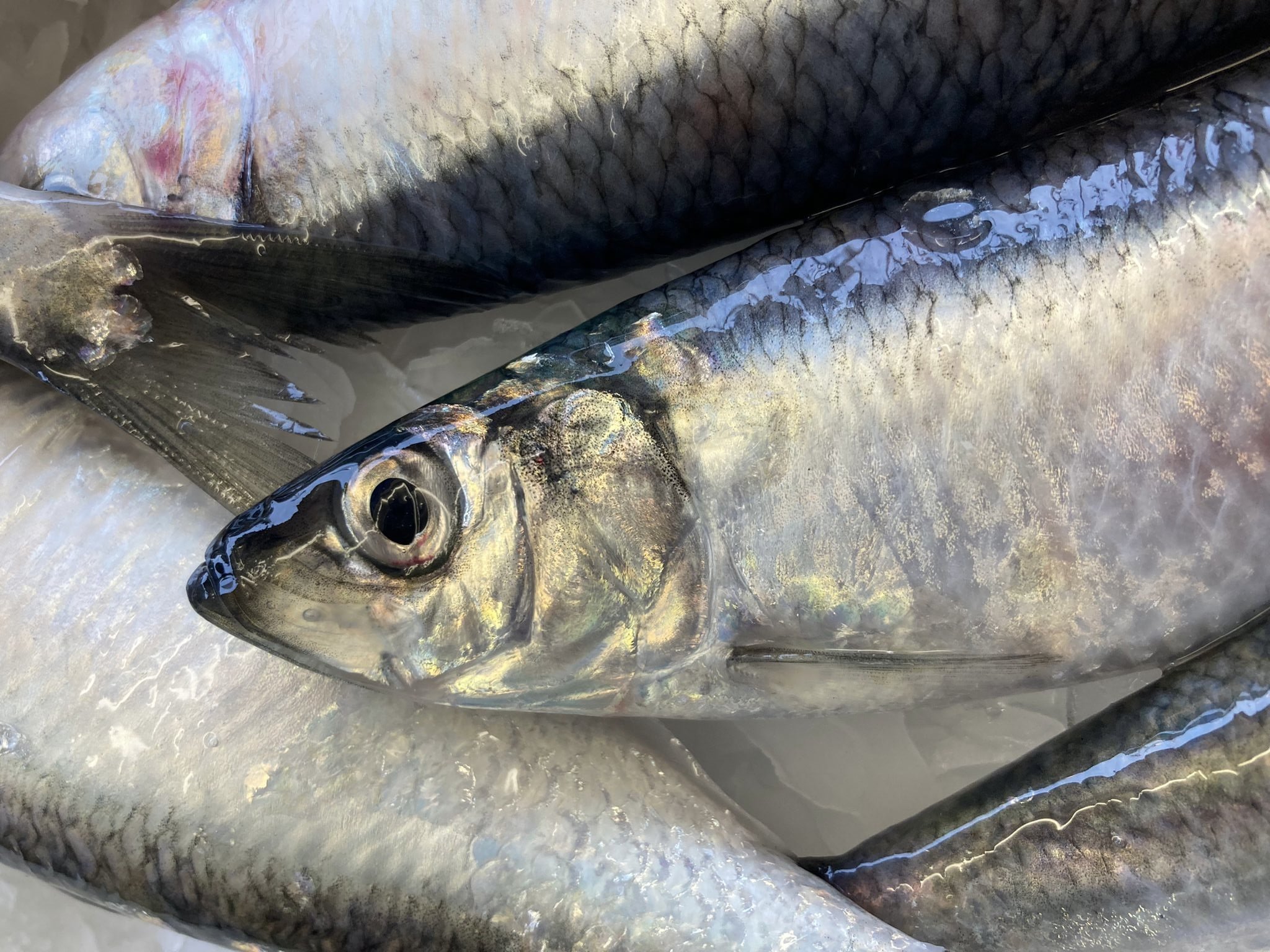
Herring
Home | Fish & Recipes | Herring
Clupea harengus
Biology
Herring are forage fish. They swim in large shoals- sometimes numbering millions of fish, following plankton blooms. These shoals can cover vast distances and in Europe follow a triangular route of navigation- so they don't eat their own babies by mistake!
Fishing
The herring fishery played a massive role in coastal economies from the dark ages until the middle of the last century. During the autumnal gluts, vast amounts were caught all the way round the country. Their high oil content makes them perfect for smoking (kippers) and pickling (rollmops), which meant they could be easily transported and stored for long periods over the winter, waiting for the weather (and fishing) to improve in the spring.
Unchecked industrial trawling led to the collapse of the fishery in the 60s. These days, caught in gill nets and abundant in the autumn, the southern population is back at healthy levels, ironically coinciding with disinterest from consumers.
Eating
Herring have a sweet, almost creamy flesh. Like other oily fish, they hold up well to sharp sauces or pickling. We love them slashed, rubbed with mustard and simply grilled. Their roes are also well worth eating if you’re lucky enough to find them.
Many traditional recipes involve coating them in oats or breadcrumbs. The texture contrast really does make a difference and soaks up a lot of flavour. Like all oily fish, fast cooking at a high heat works best.



